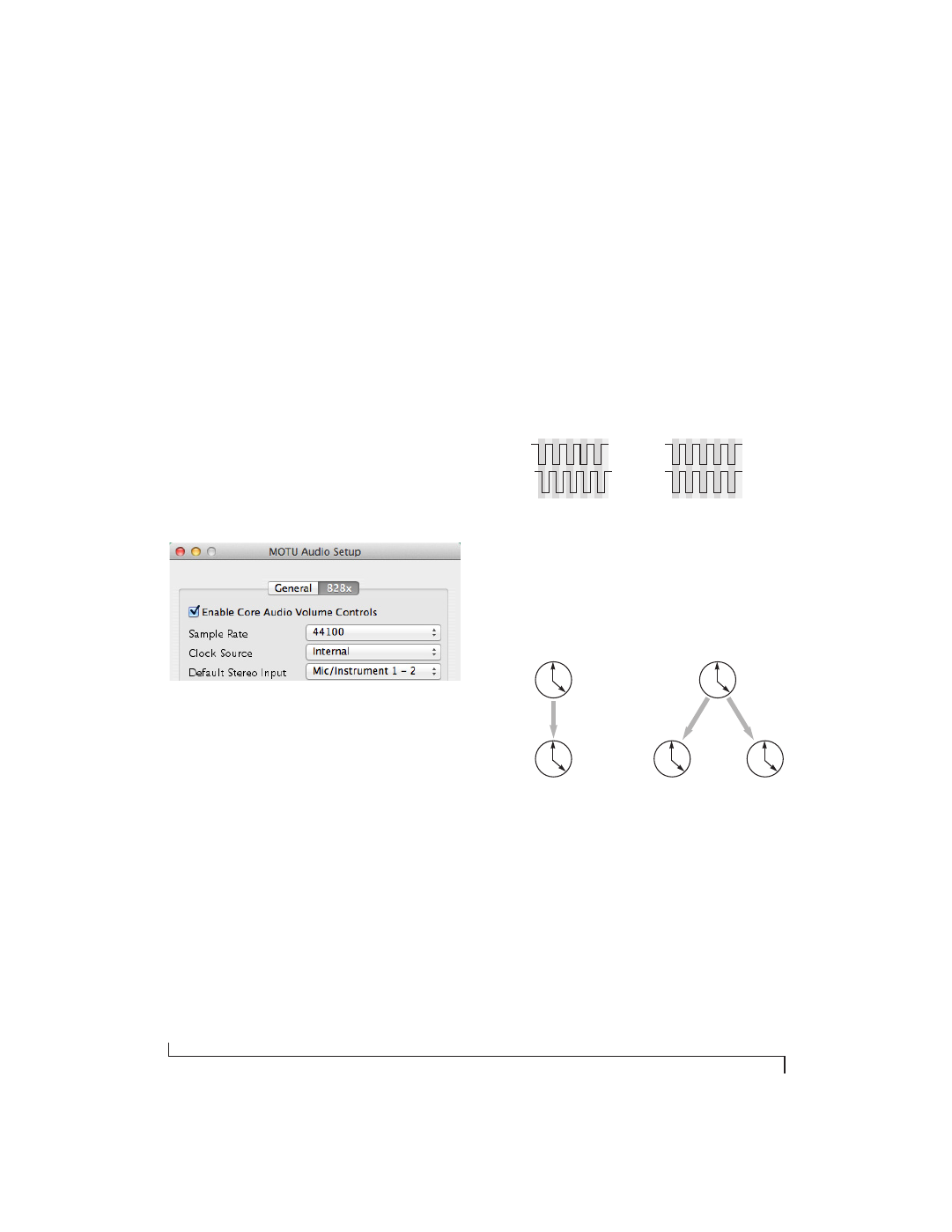Making sync connections, Do you need to synchronize the 828x, Situations that require synchronization – MOTU 828x 28x30 Audio Interface with ThunderTechnology User Manual
Page 32: Synchronization is critical for clean digital i/o, Be sure to choose a digital audio clock master

I N S T A L L I N G T H E 8 2 8 X H A R D W A R E
32
MAKING SYNC CONNECTIONS
If you connect devices digitally to the 828x, or if
you need to synchronize the 828x with an outside
time reference such as SMPTE timecode, you must
pay careful attention to the synchronization
connections and clock source issues discussed in
the next few sections.
Do you need to synchronize the 828x?
If you will be using only the 828x’s analog inputs
and outputs (and none of its digital I/O), and you
have no plans to synchronize your 828x system to
SMPTE timecode, you don’t need to make any sync
connections. You can skip this section and proceed
to “MOTU Audio Setup” on page 39,where you’ll
open MOTU Audio Setup to confirm that the
Clock
Source
setting is
Internal
as shown below.
Figure 4-12: You can run the 828x under its own internal clock when it
has no digital audio connections and you are not synchronizing the
828x system to an external time reference such as timecode.
Situations that require synchronization
There are three general cases in which you will
need to resolve the 828x with other devices:
■
Synchronizing the 828x with other digital audio
devices so that their digital audio clocks are
phase-
locked
(as shown in Figure 4-13)
■
Resolving the 828x system to SMPTE timecode
from a video deck, analog multi-track, etc.
■
Both of the above
Synchronization is critical for clean digital I/O
Synchronization is critical in any audio system, but
it is especially important when you are transferring
audio between digital audio devices. Your success
in using the 828x’s digital I/O features depends
almost entirely on proper synchronization. The
following sections guide you through several
recommended scenarios.
Be sure to choose a digital audio clock master
When you transfer digital audio between two
devices, their audio clocks must be in phase with
one another — or
phase-locked
. Otherwise, you’ll
hear clicks, pops, and distortion in the audio — or
perhaps no audio at all.
Figure 4-13: When transferring audio, two devices must have phase-
locked audio clocks to prevent clicks, pops or other artifacts.
There are two ways to achieve phase lock: slave one
device to the other, or slave both devices to a third
master clock. If you have three or more digital
audio devices, you need to slave them all to a single
master audio clock.
Figure 4-14: To keep the 828x phased-locked with other digital audio
devices connected to it, choose a clock master.
Also remember that audio phase lock can be
achieved independently of timecode (location).
For example, one device can be the timecode
master while another is the audio clock master. But
only one device can be the audio clock master. If
you set things up with this rule in mind, you’ll have
trouble-free audio transfers with the 828x.
Not phase-locked
Phase-locked
Device A
Device B
Master
Slave
Master
Slave
Slave
